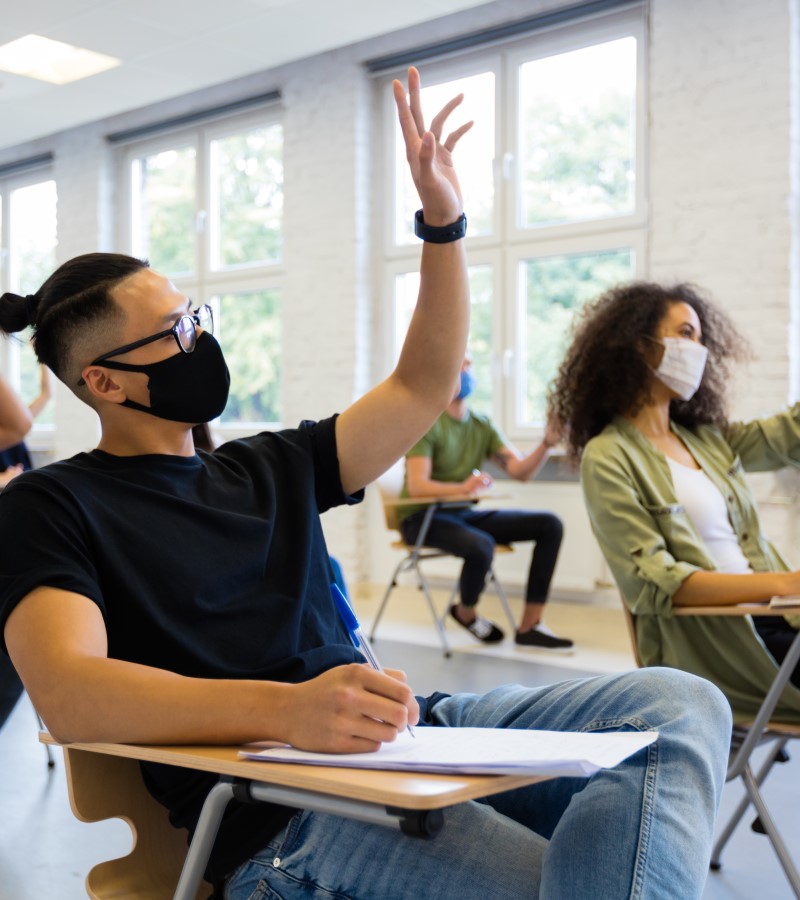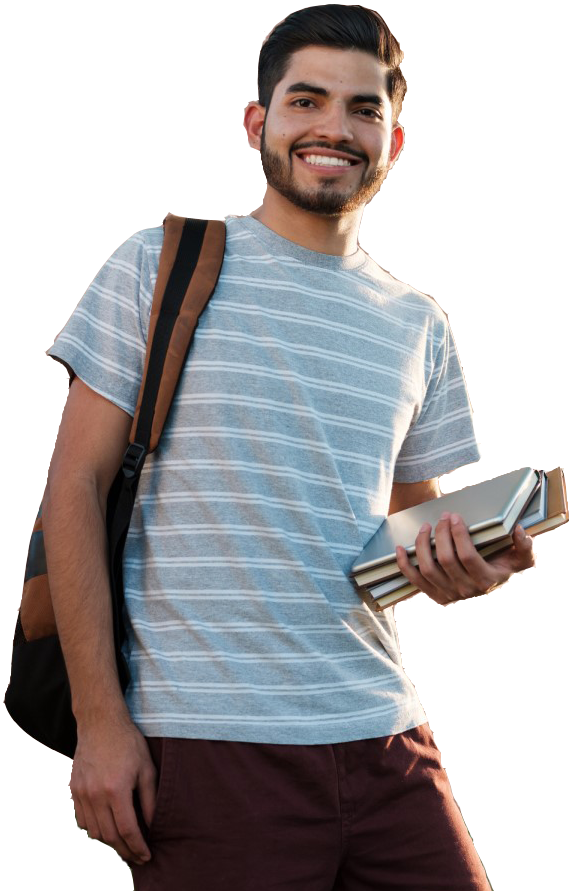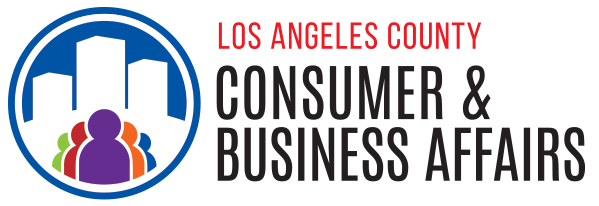Student Loan Debt
Here you will find
Student Loan Debt
Currently, 3.86 million Californians, or 9.8% of the state’s population has some form of student debt. Nationwide, student loan debt is at an all-time high of nearly $2 trillion and the average loan takes 20 years to repay.
Federal Student Debt Relief Plan (Update: Supreme Court Decision)
The Supreme Court struck down President Biden’s student loan debt forgiveness program for millions of student loan borrowers.
The Department of Education announced that loan repayments would resume with interest accruing starting September 1, 2023. The first payments were due in October 2023.
President Biden announced that he would invoke the 1965 Higher Education Act, a different law than the one at issue in the Supreme Court cases, which gives the Education Department broader authority.
- A new income driven repayment plan called Saving on A Valuable Education (SAVE) has been introduced. It will cut monthly payments to zero dollars for low-income borrowers, save all other borrowers at least $1,000 per year, and stop runaway interest rates. The SAVE plan replaces the existing Revised Pay As You Earn (REPAYE) Plan. Borrowers signed up for the current REPAYE plan will be automatically enrolled in SAVE. For more information on the SAVE plan, visit this page.
- The Department is also providing a temporary “on-ramp” transition period over the next 12-months that will help ensure borrowers return to repayment without falling into delinquency or default. The on-ramp to repayment will help borrowers avoid the harshest consequences of missed, partial, or late payments. During that time, missed, partial, or late payments will not lead to negative credit reporting, default, or loans being sent to collection agencies.
- Parent Plus loans may qualify for the newly announced SAVE plan through a loophole of double consolidation. The Biden Administration will end the double consolidation loophole by July 1, 2025. Parents have until then to consolidate their Parent Plus loans into direct loans, twice, and submit for the SAVE plan. For a step-by-step guide on the double consolidation process, please visit this page for more information.
Borrowers who can make payments should do so as payments will accrue during the on-ramp period. When designing a new debt relief program, the Department of Education will consider ways to ensure that borrowers making payments do not reduce their eligibility for debt relief. Additionally, missed payments will not count toward loan forgiveness under any of the income-driven repayment plans or Public Service Loan Forgiveness.
Borrowers in default can use the Fresh Start initiative to easily get their loans back in good standing. It’s free and takes 10 minutes or less to sign up and enroll in an affordable repayment plan with payments as low as $0 a month. Learn about payment plans available to borrowers.
For more information, please visit The Federal Student Aid FAQ About Debt Relief page.

Federal Student Loan Payment Pause
The American Rescue Plan, in response to the COVID-19 emergency, gave a reprieve to those who currently owe student loans. The law reduced the interest rates on all loans held by the U.S. Department of Education to 0%. The 0% period is retroactive to March 13, 2020. The law automatically set currently active, delinquent, and defaulted federal student loans to 0% and the Education Department suspended collection activity.
Congress recently passed a law preventing further extensions of the payment pause. Student loan interest will resume starting on Sept. 1, 2023, and payments will be due starting in October.
NEXT STEPS FOR BORROWERS
- Borrowers should update their contact information on their loan servicer’s website and with StudentAid.gov.
- Borrowers should contact their loan servicer to find out what their payment amount will be and when payments restart.
OPTIONS AVAILABLE FOR BORROWERS
- Consider an Income-driven repayment (IDR) plan.
- If the borrower already has an IDR plan but their income or family size has changed they should ask their servicer to recalculate their monthly payment.
- If you the borrower still can’t afford their payment and they only need a temporary pause on payments, they may want to consider a deferment or forbearance.
Fresh Start Program
The U.S. Department of Education announced earlier this year the Fresh Start program, which eliminates the negative effects of default for borrowers with defaulted federal student loans. Borrowers with federal student loans in default will be able to reenter current repayment status without any past-due balance and have other federal student aid benefits and protections restored.
The Fresh Start program will continue through one year after the COVID-19 payment pause ends.
The Fresh Start Program:
- Restores access to repayment options
- Restores eligibility to receive federal student aid so borrowers can complete their course of study and increase long-term repayment success
- Protects borrowers from involuntary collection efforts and costly collection fees
- Restores eligibility for future rehabilitation
- Provides credit reporting features—making it easier and more affordable for borrowers to afford living expenses
Borrowers with Fresh Start-eligible loans must make long-term payment arrangements. Those who do not make payment arrangements during the Fresh Start will again be subject to default collections. Payment arrangements can be made by visiting myeddebt.ed.gov, contacting your loan holder by phone or in writing, or calling the Default Resolution Group at 1-800-621-3115. If you’re not sure whether your loans qualify, you can call the Default Resolution Group at 1-800-621-3115 (TTY for the deaf or hard of hearing 1-877-825-9923). This program is free, and you do not need to pay to enroll.
Public Service Loan Forgiveness
The PSLF Program forgives the remaining balance on your Direct Loans after you have made 120 qualifying monthly payments under a qualifying repayment plan while working full-time for a qualifying employer.
For more information, click here.
Important: You must have been working for a qualifying employer at the time you submit the form for forgiveness and at the time the remaining balance on your loan is forgiven.
For PSLF, you’re generally considered to work full-time if you meet your employer’s definition of full-time or work at least 30 hours per week, whichever is greater.
If you are employed in more than one qualifying part-time job at the same time, you will be considered full-time if you work a combined average of at least 30 hours per week with your employers.
If you are employed by a not-for-profit organization, time spent on religious instruction, worship services, or any form of proselytizing as a part of your job responsibilities may be counted toward meeting the full-time employment requirement.
Qualifying employment for the PSLF Program isn’t about the specific job that you do for your employer. Instead, it’s about who your employer is. Employment with the following types of organizations qualifies for PSLF:
- Government organizations at any level (U.S. federal, state, local, or tribal) – this includes the U.S. military
- Not-for-profit organizations that are tax-exempt under Section 501(c)(3) of the Internal Revenue Code
- Serving as a full-time AmeriCorps or Peace Corps volunteer also counts as qualifying employment for the PSLF Program.
The following types of employers don’t qualify for PSLF:
- Labor unions
- Partisan political organizations
- For-profit organizations, including for-profit government contractors
Contractors: You must be directly employed by a qualifying employer for your employment to count toward PSLF. If you’re employed by an organization that is doing work under a contract with a qualifying employer, it is your employer’s status—not the status of the organization that your employer has a contract with—that determines whether your employment qualifies for PSLF. For example, if you’re employed by a for-profit contractor that is doing work for a qualifying employer, your employment does not count toward PSLF.
Other types of not-for-profit organizations: If you work for a not-for-profit organization that is not tax-exempt under Section 501(c)(3) of the Internal Revenue Code, it can still be considered a qualifying employer if it provides certain types of qualifying public services.
A qualifying monthly payment is a payment that you make
- after Oct. 1, 2007;
- under a qualifying repayment plan;
- for the full amount due as shown on your bill;
- no later than 15 days after your due date; and
- while you are employed full-time by a qualifying employer.
You can make qualifying monthly payments only during periods when you’re required to make a payment. Therefore, you can’t make a qualifying monthly payment while your loans are in
- an in-school status,
- the grace period,
- a deferment, or
- a forbearance.
Any loan received under the William D. Ford Federal Direct Loan (Direct Loan) Program qualifies for PSLF.
Loans from these federal student loan programs don’t qualify for PSLF: the Federal Family Education Loan (FFEL) Program and the Federal Perkins Loan (Perkins Loan) Program. However, they may become eligible if you consolidate them into a Direct Consolidation Loan.
Student loans from private lenders do not qualify for PSLF.
Under normal PSLF Program rules, if you consolidate your loans, only qualifying payments that you make on the new Direct Consolidation Loan can be counted toward the 120 payments required for PSLF. Any payments you made on the loans before you consolidated them don’t count. However, if you consolidate these loans into a Direct Loan before October 31, 2022, you may be able to receive qualifying credit for payments made on those loans through the limited PSLF waiver.
The following repayment plans do not qualify for PSLF:
- Standard Repayment Plan for Direct Consolidation Loans
- Graduated Repayment Plan
- Extended Repayment Plan
- Alternative Repayment Plan

The California State Loan Repayment Program (SLRP)

The California State Loan Repayment Program (SLRP) increases the number of primary care physicians, dentists, dental hygienists, physician assistants, nurse practitioners, certified nurse midwives, pharmacists, and mental/behavioral health providers practicing in federally designated California Health Professional Shortage Areas (HPSA).
Check if you’re eligible here.
- Be a U.S. citizen (U.S born or naturalized)
- Possess a valid and unrestricted license to practice your profession in California
- Be free from judgments arising from federal debt
- Not have any other existing service obligations with other entities
- Not be in breach of any other health professional service obligation
- Be current on any child support payments
- Be employed at or have accepted employment at a SLRP approved Practice Site (See Practice Site Eligibility section for more details)
- Commit to providing a 2-year full-time (40 hrs./week) or a 4-year half-time (20 hrs./week) service obligation (See service commitment and awards section for more details)
SLRP participants must possess an active and valid license (without restrictions or encumbrances) to practice in one of the following eligible disciplines:
-
- Medicine (MD/DO)
- Dentist (DMD/DDS)
- Primary Care Nurse Practitioner (NP)
- Primary Care Physician Assistant (PA)
- Certified Nurse-Midwife (CNM)
- Registered Dental Hygienist (RDH)
- Health Service Psychologist (HSP), formerly Clinical or Counseling Psychologist
- Licensed Clinical Social Worker (LCSW)
- Licensed Professional Counselor (LPC)
- Licensed Marriage and Family Therapist (LMFT)
- Psychiatric Nurse Specialist (PNS)
- Pharmacists (PharmD) (Please review Additional Pharmacist Guidelines)
- Substance Use Disorder Counselor
FOR PHYSICIANS
- Family Medicine
- General Internal Medicine
- General Pediatrics
- Gerontology
- General Psychiatry
- Obstetrics/Gynecology
FOR NURSE PRACTITIONERS AND PHYSICIAN ASSISTANTS
- Adult
- Family
- Pediatrics
- Psychiatry/mental health
- Geriatrics
- Women’s health
Be located in a federally designated HPSA.
- Be a public or private not for-profit out-patient facility.
- Match the SLRP award, on a dollar-for-dollar basis, in addition to the provider’s salary.
- Pay the provider a prevailing wage.
QUALIFYING EDUCATIONAL LOANS
Qualified Lender: Qualifying commercial lending institutions are those subject to examination and supervision by an agency of the United States, or by the state in which the institutions have their place of business.
Loans (government and commercial) obtained from a qualifying lender for undergraduate and graduate health profession degrees.
NON-QUALIFYING EDUCATIONAL LOANS
The following types of debt are not eligible for loan repayment under SLRP:
- Interest incurred on educational debt
- Loans in default
- Loans repaid in full
- Credit card debt
- Primary Care Loans
- Personal lines of credit
- Residency
Service years and award amounts for full-time/half-time initial and extension grants may vary from year to year; the amounts are subject to change based upon federal requirements.
Full-Time Maximum Award (2-year initial obligation)
- Initial Obligation: $50,000.00
- Extension Year 1: $20,000.00
- Extension Year 2: $20,000.00
- Extension Year 3: $10,000.00
- Extension Year 4: $10,000.00
Half-Time Maximum Award (4-year initial obligation)
- Initial Obligation: $50,000.00
- Extension Year 1: $10,000.00
- Extension Year 2: $10,000.00
- Extension Year 3: $5,000.00
- Extension Year 4: $5,000.00
Each site is required to match the awarded grant, on a dollar for dollar basis, up to $25,000 per provider. The award amount may vary due to the amount of provider’s debt. The provider will need to consult with the practice site to determine if the site will provide the matching award.
- Email: SLRP Support
- Phone: (916) 326-3700
The SLRP application cycle opened on July 15, 2022, and closes on September 15, 2022.
Resources for Student Borrowers in California
The California Department of Financial Protection & Innovation works to ensure that student borrowers who have fallen behind on payments have the information they need to get back on track, a crucial part of an equitable economic recovery.
California Student Borrower Bill of Rights
The California Student Borrower Bill of Rights was established by California Assembly Bill 376. These rights
apply to all Californians with federal and/or private student loans.
Know Before You Owe
Understand the basics about student loans, including different kinds of loans, interest, the difference between servicer and lender, and more!
Helpful Events from the California DFPI
The California Department of Financial Protection and Innovation hosts events that can help student borrowers, including webinars, podcasts, and other helpful resources. Check their page for the latest!

